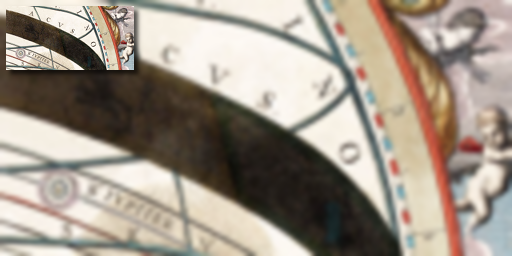The Mitchell–Netravali filters or BC-splines are a group of reconstruction filters used primarily in computer graphics, which can be used, for example, for anti-aliasing or for scaling raster graphics. They are also known as bicubic filters in image editing programs because they are bi-dimensional cubic splines.
Definition

The Mitchell–Netravali filters were designed as part of an investigation into artifacts from reconstruction filters. The filters are piece-wise cubic filters with four-pixel wide supports. After excluding unsuitable filters from this family, such as discontinuous curves, two parameters and remain, through which the Mitchell–Netravali filters can be configured. The filters are defined as follows:
It is possible to construct two-dimensional versions of the Mitchell–Netravali filters by separation. In this case the filters can be replaced by a series of interpolations with the one-dimensional filter. From the color values of the four neighboring pixels , , , the color value is then calculated as follows:
lies between and ; is the distance between and .
Subjective effects
Various artifacts may result from certain choices of parameters B and C, as shown in the following illustration. The researchers recommended values from the family (dashed line) and especially as a satisfactory compromise.

Implementations
The following parameters result in well-known cubic splines used in common image editing programs:
| B | C | Cubic spline | Common implementations |
|---|---|---|---|
| 0 | Any | Cardinal splines | |
| 0 | 0.5 | Catmull-Rom spline | Bicubic filter in GIMP |
| 0 | 0.75 | Unnamed | Bicubic filter in Adobe Photoshop |
| 1/3 | 1/3 | Mitchell–Netravali | Mitchell filter in ImageMagick |
| 1 | 0 | B-spline | Bicubic filter in Paint.net |
Examples
-
 Magnification with a bicubic filter in GIMP (Catmull-Rom)
Magnification with a bicubic filter in GIMP (Catmull-Rom)
-
 Magnification with a bicubic filter in Paint.NET (B-spline)
Magnification with a bicubic filter in Paint.NET (B-spline)
See also
References
- ^ Mitchell, Don; Netravali, Arun (June 1998). "Reconstruction Filters in Computer-Graphics" (PDF). Written at Atlanta. Proceedings of the 15th annual conference on computer graphics and interactive techniques (SIGGRAPH '88). ACM SIGGRAPH. Vol. 22. New York City: Association for Computing Machinery. pp. 221–228. CiteSeerX 10.1.1.582.7394. doi:10.1145/378456.378514. ISBN 0897912756. ISSN 0097-8930. Retrieved 25 October 2020.
- Pharr, Matt; Jakob, Wenzel; Humphreys, Greg (November 2016). "Sampling and Reconstruction". Physically Based Rendering: From Theory to Implementation (3rd ed.). San Francisco: Morgan Kaufmann Publishers. pp. 279–367. ISBN 978-0-12-800645-0. Retrieved 25 October 2020.
- Theußl, Thomas (29 December 1999). "The eighties: an image processing view". Sampling and Reconstruction in Volume Visualization (Diploma thesis). TU Wien. Archived from the original on 24 August 2014.
- ^ Thyssen, Anthony. "Resampling Filters". Examples of ImageMagick Usage (Manual). ImageMagick. Retrieved 25 October 2020.
- Summers, Jason (September 2011). "What is bicubic resampling?". Entropymine (Project). Retrieved 25 October 2020.
 and
and  remain, through which the Mitchell–Netravali filters can be configured. The filters are defined as follows:
remain, through which the Mitchell–Netravali filters can be configured. The filters are defined as follows:

 ,
,  ,
,  ,
,  the color value is then calculated
the color value is then calculated  as follows:
as follows:

 lies between
lies between  is the distance between
is the distance between  (dashed line) and especially
(dashed line) and especially  as a satisfactory compromise.
as a satisfactory compromise.